I use a few articles like this one on the 15-minute city in my Introduction to Enviromental Studies class. The basic idea is that cities could be better designed for humans (fewer cars, less traffic, less pollution, better quality of life, etc.) if people could access everything they need (work, schools, stores, services) within a 15-minute walk or bike ride from their homes.
This is pretty much the life I am living this semester in Prati, a Roman neighborhood near Vatican City. I don’t have time right now to make my own map, so I’ll put a link here to google maps and you can zoom out to get your bearings. My apartment is a five-minute walk from St. Peter’s Square, and a 25 minute walk from the Pantheon in the historical center. To get to other areas of Rome, like Trastevere or Testaccio, I take public transit.
Prati was built in the 19th century, on former swamp lands, which means that it is one of the few neighborhoods in Rome with a regular grid pattern of streets. Every block follows the same pattern: enormous apartment buildings (mine covers almost half of the city block) with central courtyards, most with six floors. In most buildings there are two floors with larger apartments that have higher ceilings (mine at least 18 feet) – usually either the second and third floors, or the third and fourth. I live on what would be considered the fourth floor in the US, but the third in Italy since the ground floor is 0, not 1.
Since these buildings were built before elevators were common, tiny ones were installed after the fact that run through the central columns of the staircases. My elevator fits exactly one person with one suitcase, and I hardly ever use it. Instead, I take the 69 steps up to the third (fourth) floor at least three times each day, which helps a little bit to work off all the pizza I’ve been eating.
What makes this neighborhood (and many European city neighborhoods) work as a 15-minute city is that the ground floor of every building is commercial space. There are restaurants, stores, and businesses lining every meter of every street.
In the morning, I walk two minutes across the street and down half a block to my favorite bar called Parenti.
A bar in Italy is not what we think of in English as a bar – it’s a café, one with excellent Italian espresso and other coffee based drinks, pastries, sandwiches, and also a selection of alcohol, though in all the times I’ve been there (always in the morning) I’ve never seen anyone order it. I have a cappuccino scuro. Scuro means dark, and you can make a cappuccino darker either by adding less foamed milk or more coffee. The three people who work at the café know that I like mine with more coffee, and they don’t even bother to ask anymore what I want: instead it’s “Buongiorno!” and then “Di solito?”, which means “the usual?.” So maybe it is a little like an American bar in that sense. The bar is family owned and operated, and the pastry chef and his mother (nonna) make some of the best pastries I’ve ever tasted.
It's surprising how much retail space there is on the ground floor, and what a variety of businesses fill it. On my block alone there are several stores selling clothing and accessories, a Bialetti store with coffee makers and other kitchen items, a souvenir shop, a gourmet foods store, and a Grom gelato franchise, the best chain gelato in Italy (and maybe the world).
Some stores are surprisingly massive, though you can’t tell from the outside. The largest supermarket in my neighborhood, Pewex, is so discreetly placed that it took me a week to find it. The entrance is shown below, just above the first black car on the left, and it looks like a small market from the outside. But it extends in a winding path through nearly half of the huge block, joining what must have been several smaller stores in a previous era. There is an exit further up the block, between the two white cars on the right, and another exit around the corner to the left, a third of the way down that block.
In addition to groceries, it has a fresh fish counter, a butcher shop, a bakery, a massive deli counter, and even a sushi counter. And since we’re in Italy, supermarkets also sell beer, wine, and stronger alcohol.
It's a fifteen minute walk from my apartment to the offices of our study abroad partner CEA. I go almost every day, to meet with students, to prepare and teach my class, to ask probably way too many questions of the staff, and to take my Advanced Italian class three days a week.
Within that same 15 minute walking radius of my apartment is everything I would need to live long term in Rome. There are schools and the branch campuses of two universities. There are stores that almost everything I could want: groceries, hardware, kitchenware, clothing, accessories, shoes, specialty foods, electronics, and so on. There are dozens of restaurants, pizzerias, bakeries, and bars, both the coffee kind and the other kind. Many of the restaurants have outdoor seating across the sidewalk, colonizing parts of the street: this is probably an after-effect of COVID-19.
There are two stores that sell fresh pasta, made every day. There are stores for pet supplies and even pets: one evening I thought it was odd that I could hear so many birds chirping after dark, and then I passed the open door of an ucellerie, a bird store. And of course the Mercato Trionfale is also within my 15 minute radius, but even without that I could still take care of almost all my needs.
There are services too: barber shops and hair salons, waxing and other beauty treatments, Thai massage, the offices of many tour companies, luggage storage places, banks, real estate agencies, and even auto repair shops, tucked into the the ground floor of apartment buildings.
There is a massive movie theater, no doubt with significant sound proofing between the projections spaces and the apartments above. Some of the buildings even use the space below the ground for commercial space. The white bottom of the photo below is the sidewalk - they are in the process of remodeling the space into what may be a restaurant or bar.
The neighborhood also has dozens of doctors, lawyers, architects, dentists, physical therapists, and so on. Their offices are not on the ground floor but in apartments where you ring the corresponding buzzer to be let into the building. In the example below, there is a dermatologist, a law office, a dental practice, a psychologist, a podiatrist, a physical therapy practice, and whatever the business called “Get in Rome” is.
Even the offices and classrooms of CEA are redesigned apartments. Rather than owning a building in the suburbs, a law firm will buy an apartment and then each lawyer has an office, probably with paralegals and a reception desk in what would have been the living room. Doctors function the same way, only without assistants or reception: you open the door to an apartment and there is a small hallway, a tiny waiting room, and three to five closed doors that are the individual offices of the doctors. You get called in when it’s your turn, and you pay them directly for the visit, most of which is reimbursed later.
What makes the 15-minute city work is mixed use zoning. One of the things that most surprised Christian when he spent a month with me in the United States last year was the bizarre (to him) separation of residential areas from stores and services. He said, “But that means that you need a car for everything!” Well, yes. You could even say that our cities were designed this way on purpose, for the benefit of the companies selling cars, tires, and gasoline. As a result, space for cars (roads, parking lots, etc.) occupies 50 to 60 percent of the land area of many US downtowns.
People walk a lot in Prati, and do most of their shopping on foot. I think that this is one reason that the Mercato Trionfale is such a thriving place. The neighborhood is also well served by public transit, with two metro stops and at least a dozen bus lines. People do have cars – but there are not enough parking spaces, and I don’t think that cars are used as much as they otherwise would be as a result.
The lack of parking spaces makes for some very creative parking strategies. First, if you are going to have a car in Rome you want a small one: I have never seen so many small cars, most of them brands I’ve never seen elsewhere.
Second, if you can’t find a parking space, make one. People park on the street corners, in between the crosswalks.
They double park in front of the trash and recycling dumpsters: the logic seems to be that since the dumpsters are taking up valuable parking real estate, it’s only fair to reclaim those spaces in front of them.
People double park, not just for a few minutes, but for hours, or overnight. And as soon as one person double parks, other people are encouraged to do the same behind them.
A few weeks ago on my way home from work I saw an empty parking spot just around the corner from my apartment. I stopped suddenly, astonished, and realized that up until this point, more than two months in Rome, I have not seen an empty parking spot in my neighborhood.
I felt an irrational desire to claim it, this extremely rare thing that just appeared in my path, as if by magic. I don’t have a car, so I thought instantly of putting a tent in the spot… but I don’t have a tent either. And I soon realized that I was being ridiculous. But I’ve been looking more consciously since, and I haven’t seen another one.
People do their shopping on foot. I see them every day, carrying bags back from stores, or using a caddy like the ones you saw in my previous post. People also shop for groceries more often: two or three times per week, even more often if you’re forgetful like me and need to go almost every day to get one or two items. I do the same thing in Lyon, where there are three grocery store options within a five minute walk from the apartment, and two thrice-weekly markets that are a fifteen minute walk.
In addition to not having to worry about a taking the car (if you have one), there are two other reasons that people shop this way in neighborhoods like Prati: first, apartments are smaller than American houses, and refrigerators are MUCH smaller. Like one third the size, or even less. It took me at least two years in Lyon to learn to adapt to having what to me is a tiny refrigerator. Cupboard space is similarly reduced. If we did an American style shopping trip at a supermarket and came back with a trunk full of groceries, there would literally be no place to put them. I have to shop more often, but as a result, there is almost no food waste: we have to eat what is in the refrigerator before I can buy ingredients to make something else. And since you can see everything when you open the fridge, it’s not really possible to have items that get forgotten about until they go bad.
Second, people really do prioritize the freshness of food more than they do in the US. It’s common to buy bread daily, or at least every other day, and to eat salads and fresh vegetables like asparagus or green beans within a day or two of purchasing them. Both the French and the Italians eat their steaks and hamburgers extremely rare, and both have a very common dish with raw beef: carpaccio in Italy, steak tartare in France. That’s not something that they are not going to prepare or eat with meat that hasn’t been purchased that day.
For me, it wasn’t a new experience to shop for food several times each week – as I said above, I’m forgetful, and I also like to decide only a day or two in advance what I want to eat. In Minnesota, I stop two or three times a week at a coop or grocery store on my way home from work, and I pretty much do the same in Prati, only on foot rather than in a car. Geography also matters: people can easily access all the stores they need in Prati because it’s a grid, allowing for rapid travel between any two points. I’ve seen this very useful graphic attributed to the Congress for New Urbanism, but I can’t find it on their website to put in a direct link:
With a grid pattern, it’s very easy to get to the bus and metro stops, which are clustered along the larger streets that form the outside edge more or less of the neighborhood. With mixed use zoning, everyone has a grocery store within a five minute walk and almost everything else they need on a day to day basis within fifteen minutes. It really is a very comfortable way to live.
Would you like to live in a 15-minute city? Are there disadvantages that I’m not seeing? Let me know what you think in the comments.



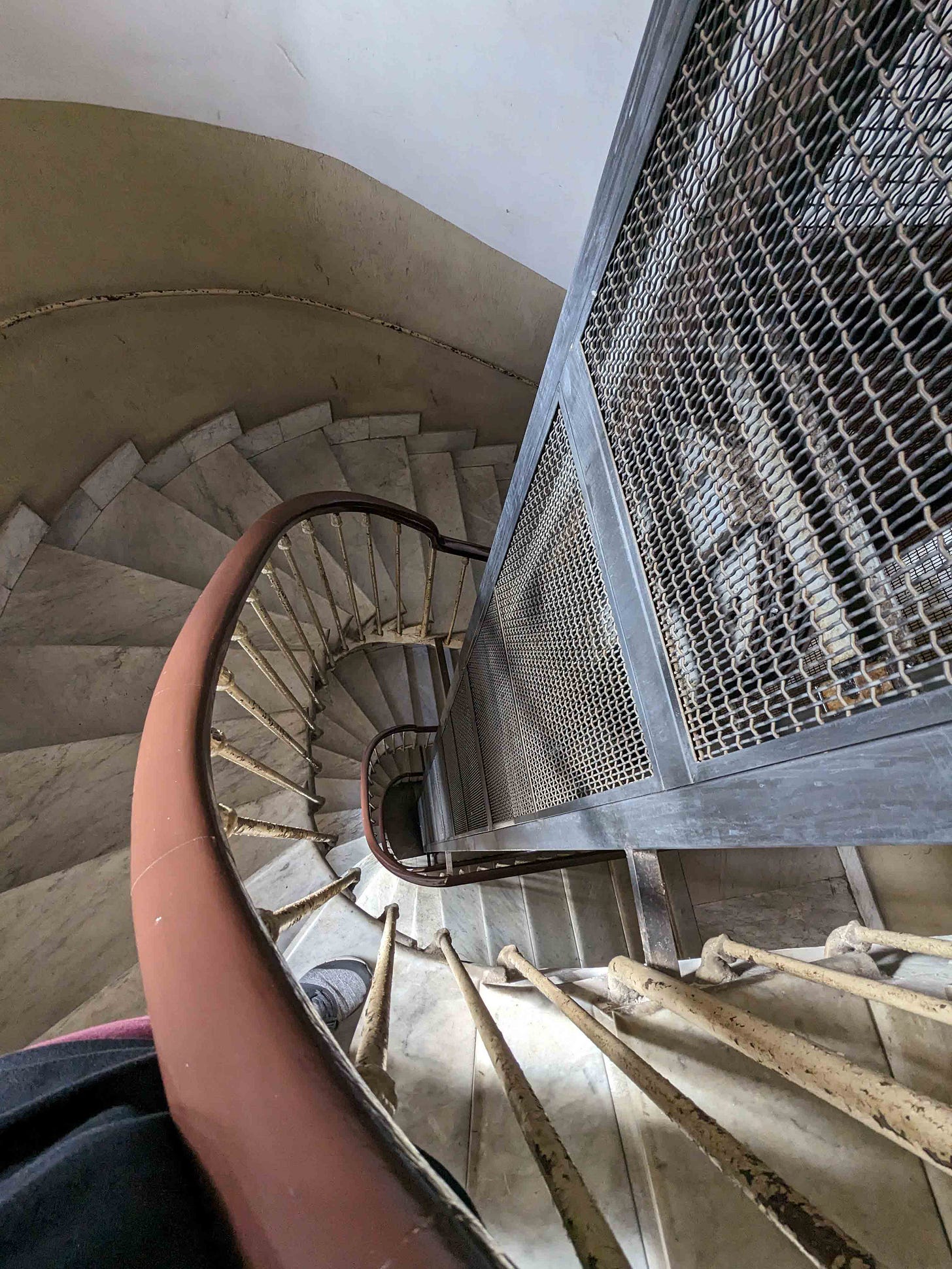

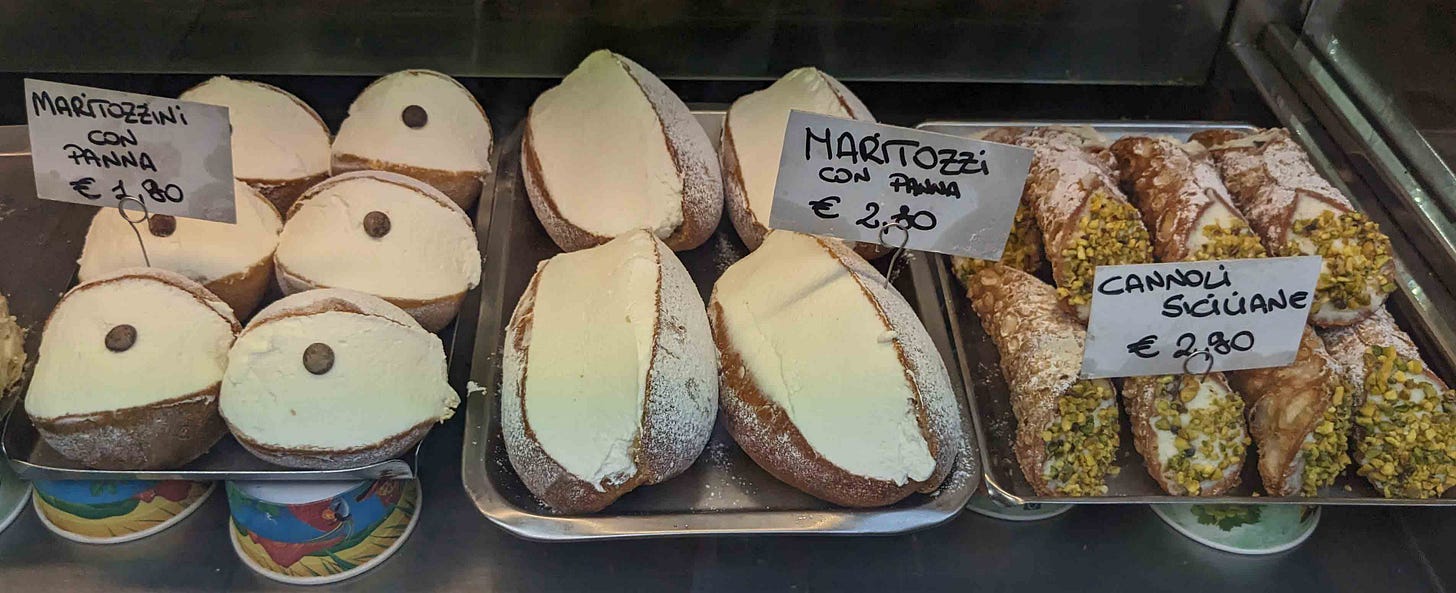

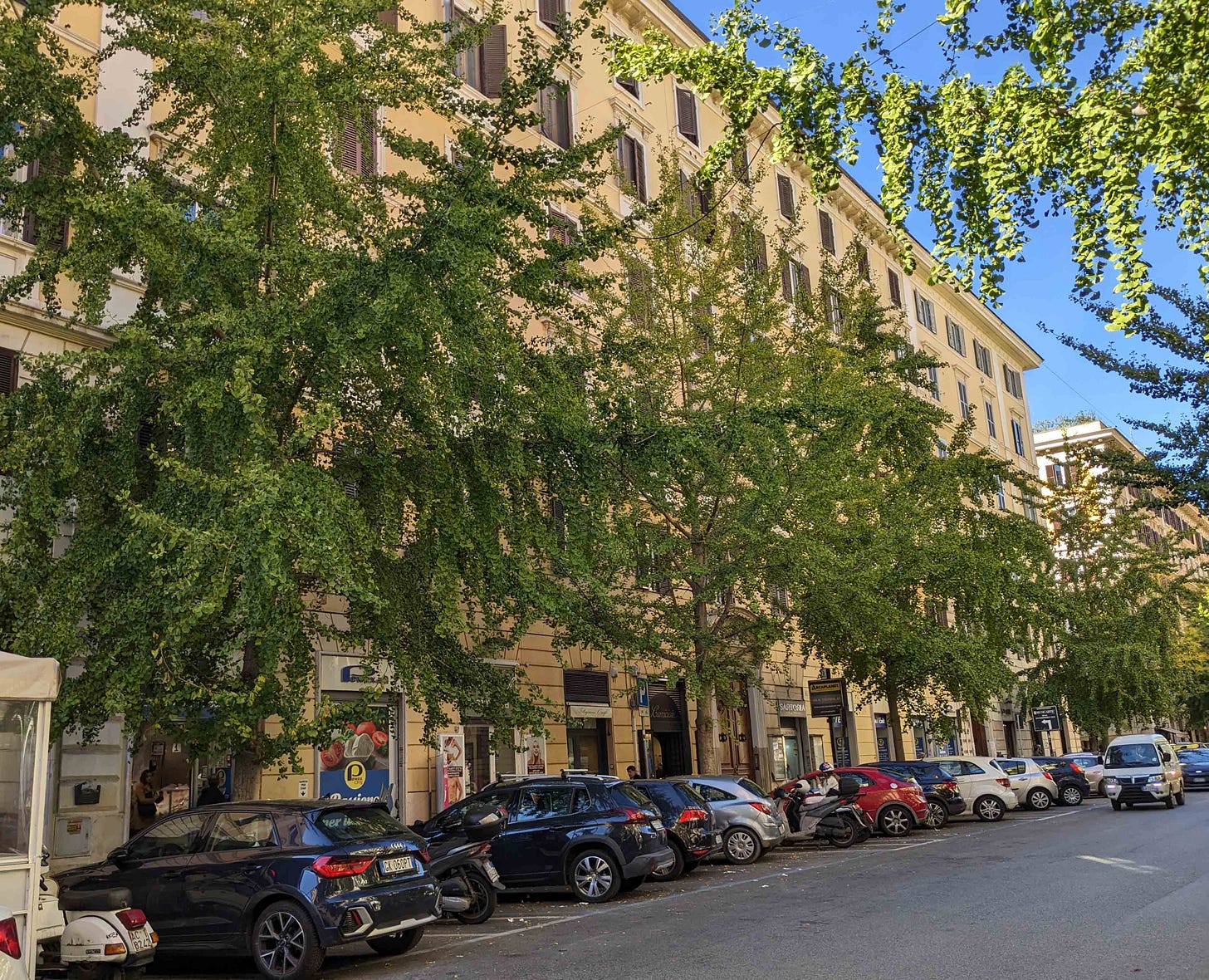



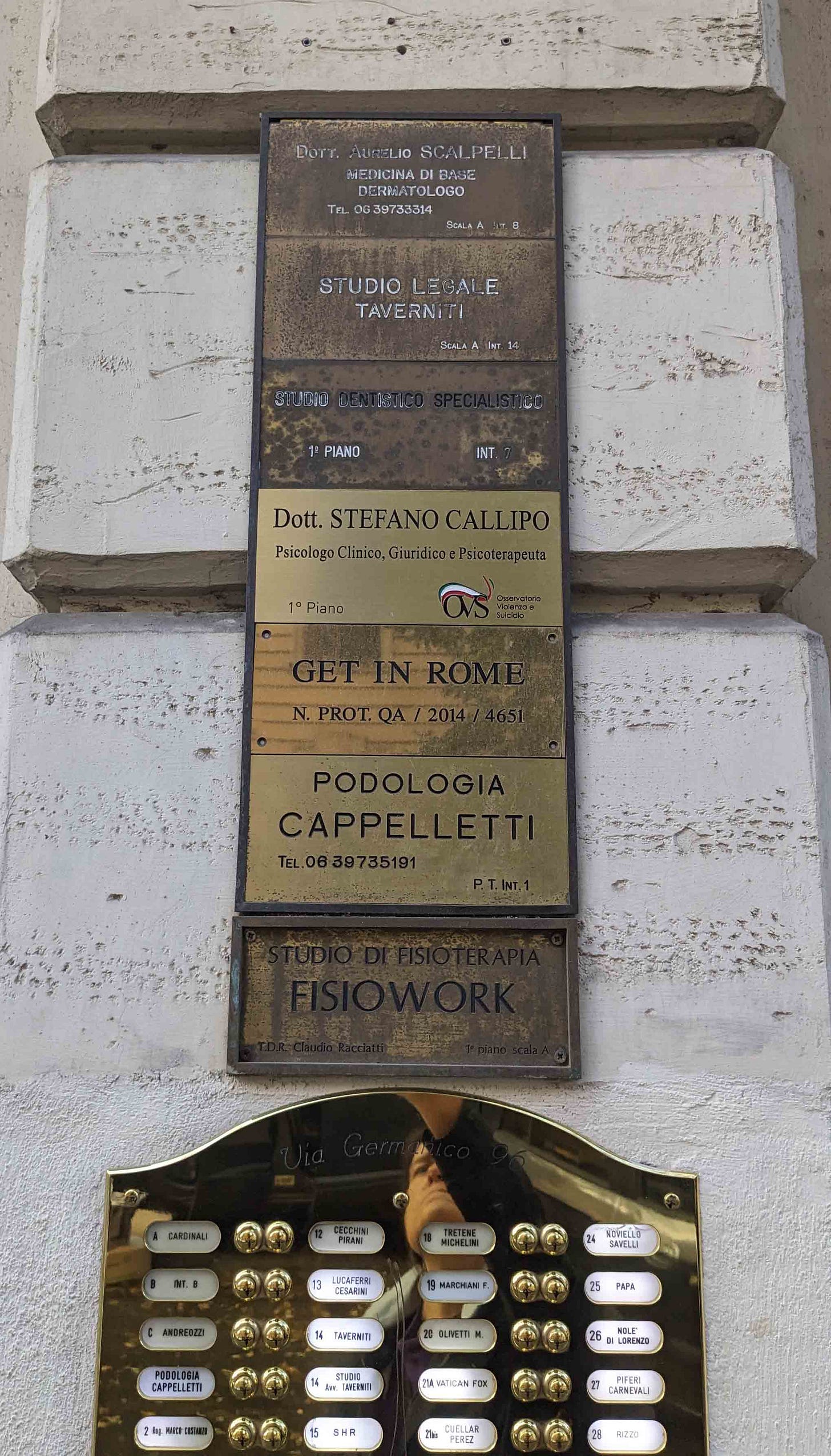
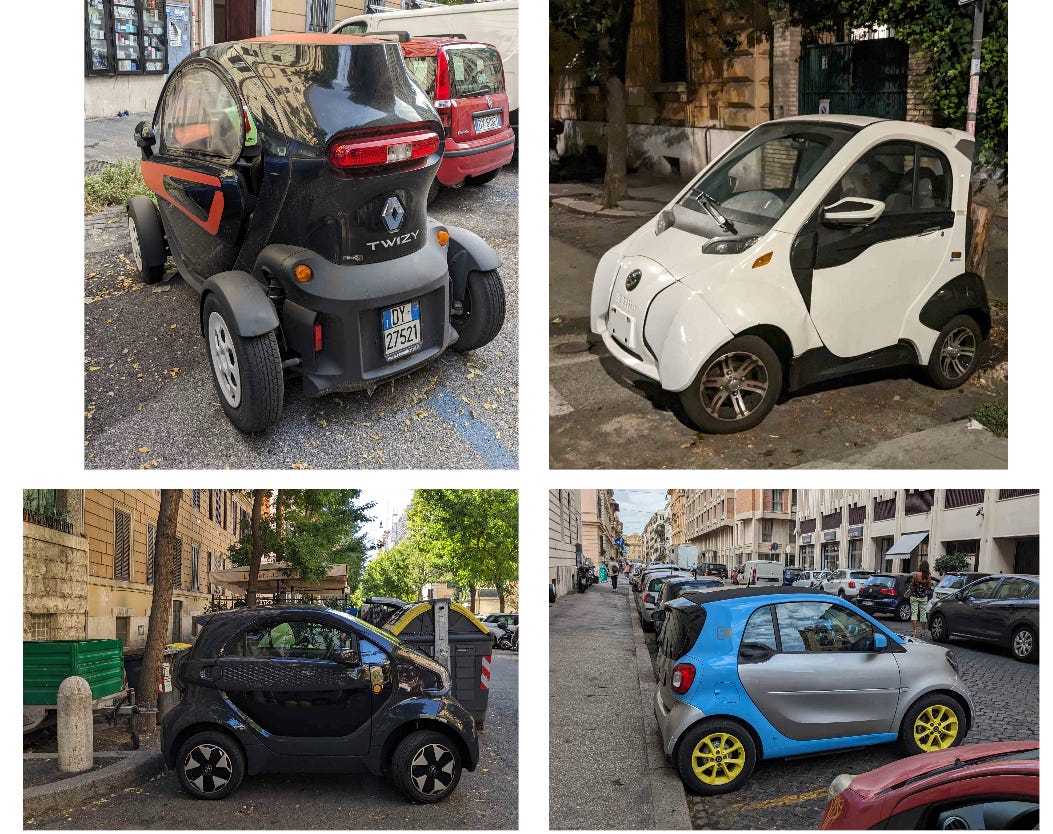

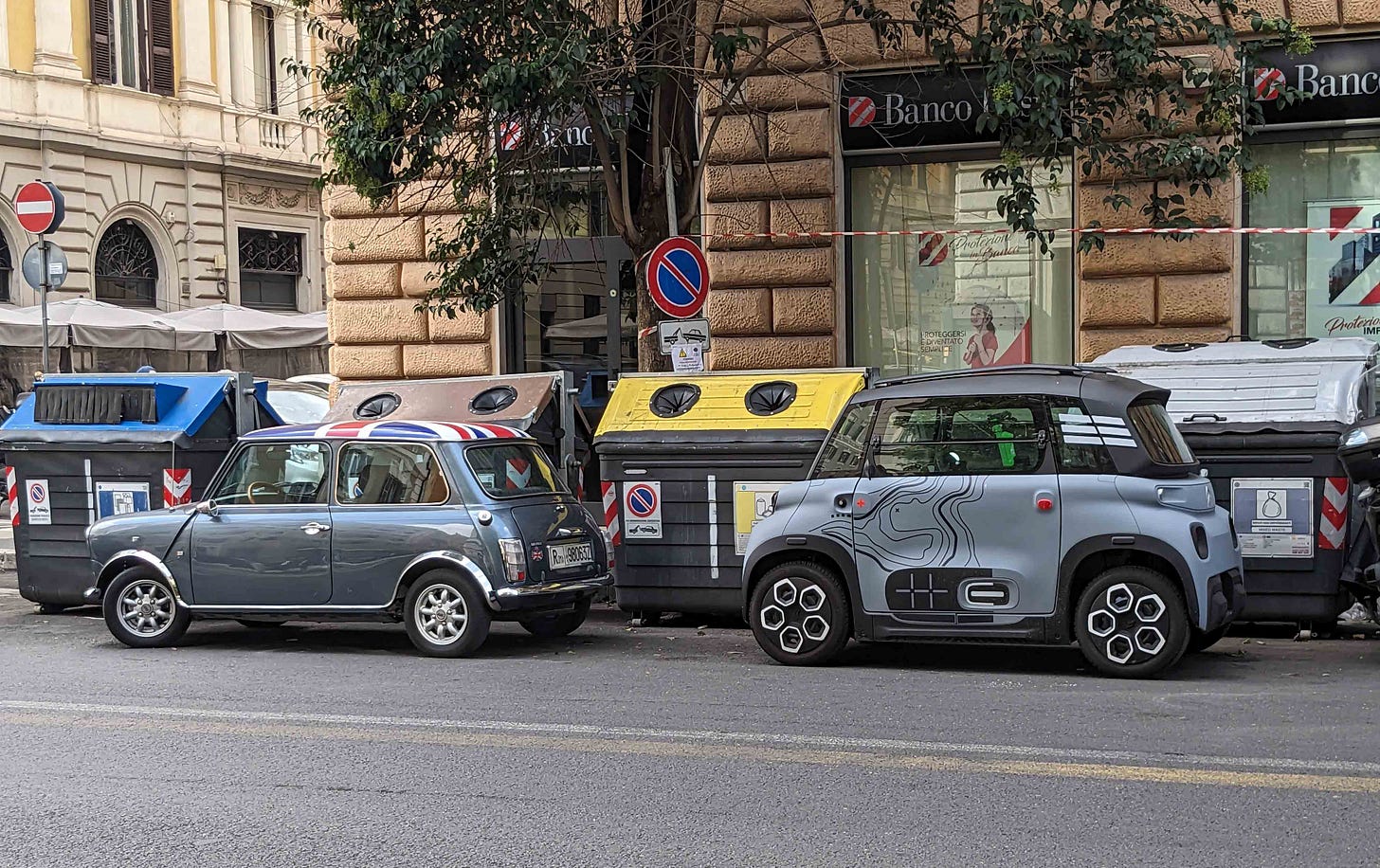


Well, after a few weeks where the comments weren't working, I sat down to give you a better description of the problem, and they work! Having just returned from a month in Torino, I can vouch for everything you've written. I was in a toy store that looked small from the outside, but had dozens of small-to-medium sized rooms connected by corridors and even an escalator. One street had thick glass embedded in the sidewalk - these were skylights for the street below. (I think it would be strange to see the soles of people's shoes overhead as you sat at your desk). My host at my homestay didn't own a car, but had three bikes - one for short errands that she didn't care if someone stole, one for longer errands in town, and a quality one for long rides in the countryside on weekends. Even from a city of over 1 million people, you can reach the countryside by bike in ten or fifteen minutes. Amongst her network of friends she has two cars she can borrow in a pinch. Her son is a dentist and his surgery is on the second (Italian first) floor, facing the street. When it starts getting dark, it's possible to watch people get root canals from down on the street. Torino also has miles of portici (ornate covered sidewalks) so it's possible to cover long distances with only the least bit of exposure to rain.
This is a test comment